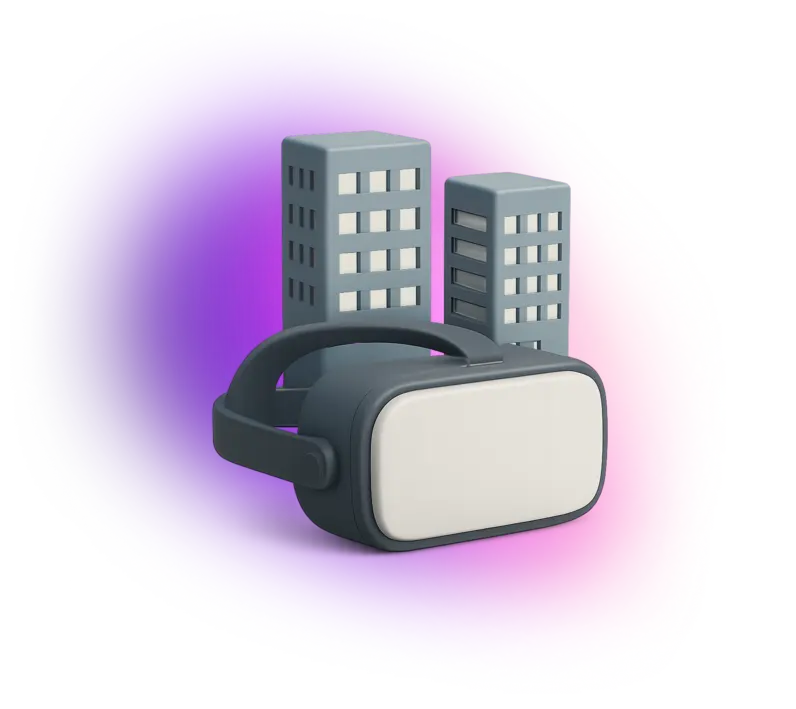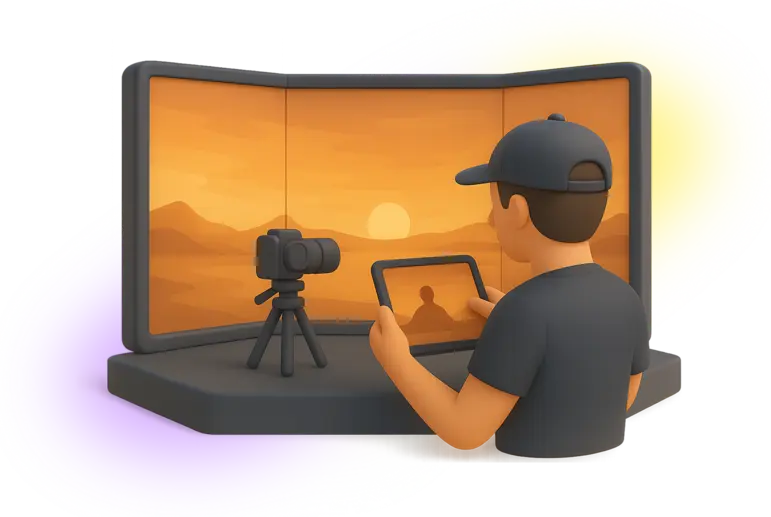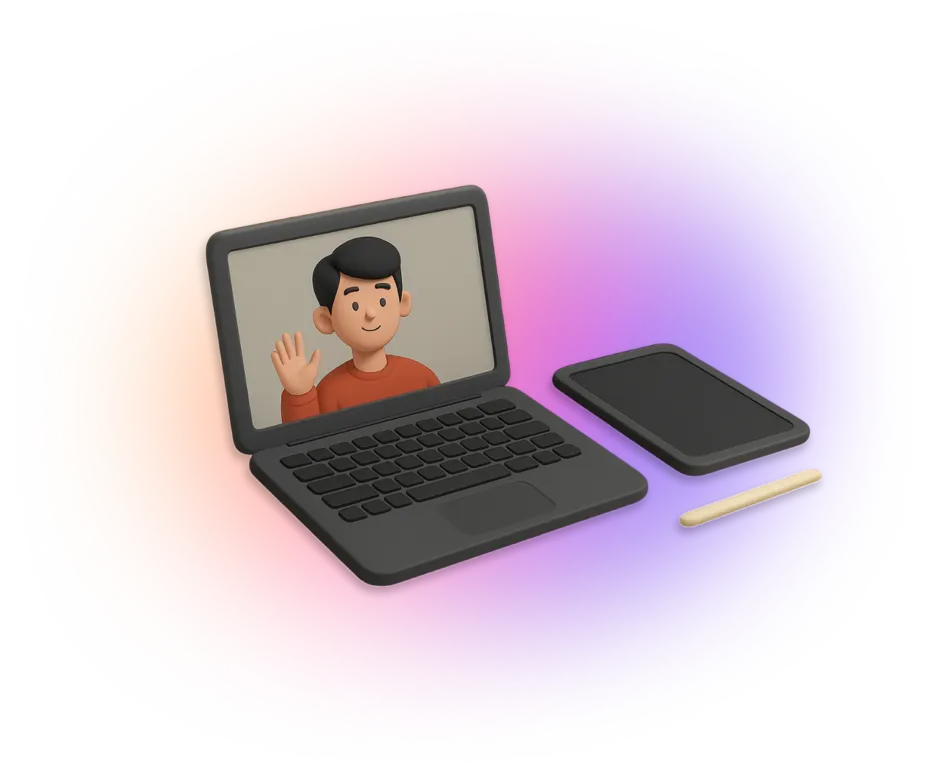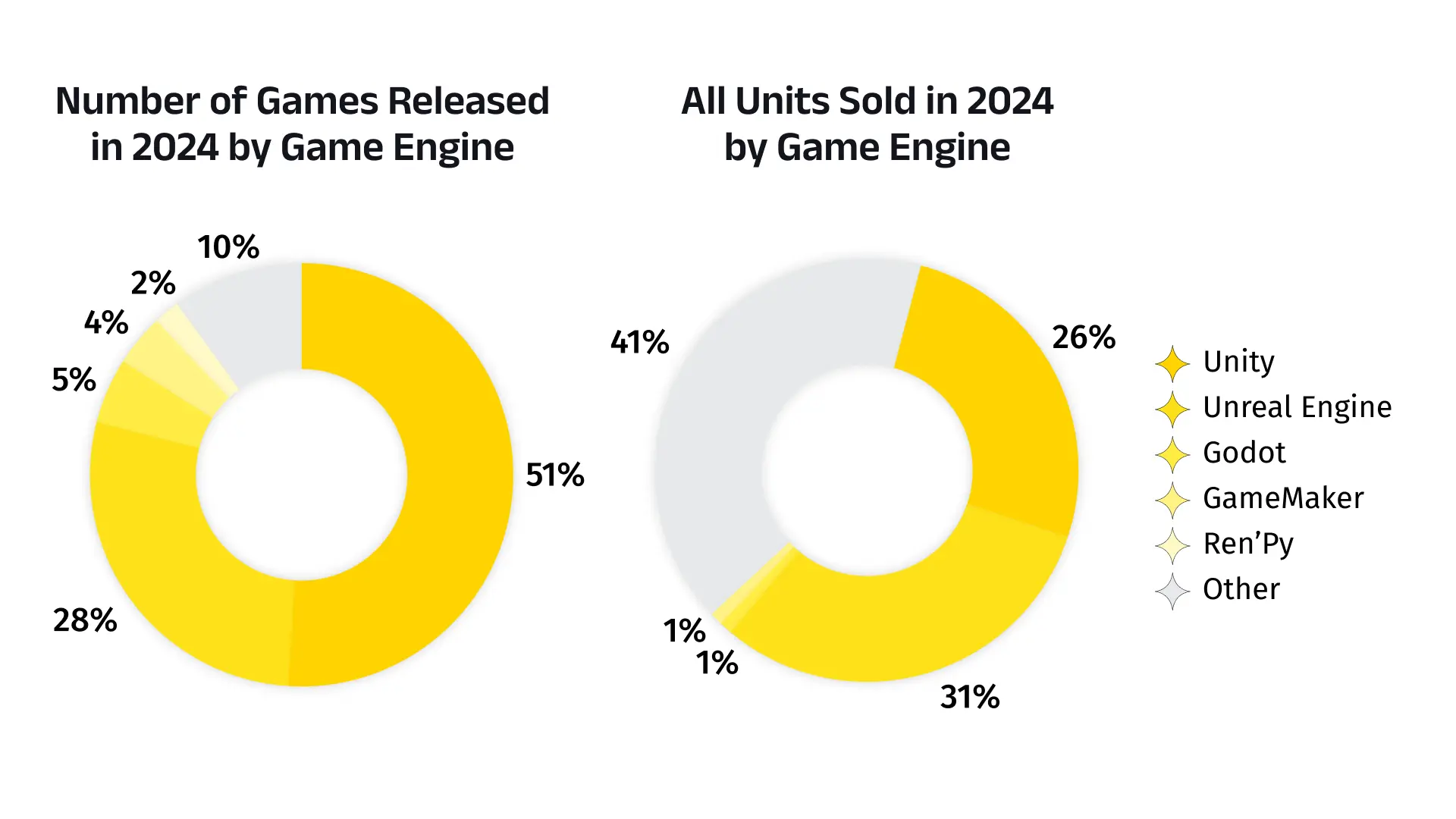Unity & Unreal Engine Beyond Gaming: The Enterprise Software Game-Changers

Julia Teryokhina, Senior Presales Engineering Manager
Last updated: August 20, 2025
Do you scold your child for spending too much time playing games? Take a closer look — they might be learning, not just having fun. Nowadays, you can find game-based methods everywhere: in schools, major companies, engineering, and even system modeling. What used to be every kid’s dream — playing all day — is quickly becoming the new normal.
Why do these techniques work? Because our brains actually love them. When something feels enjoyable, our motivation gets a lift — and with it, our focus and productivity. Gaming technologies, combined with generative AI and virtual reality, allow the imagination to break free from all earthly limits, while smart tech quietly handles the boring, routine work.
Numbers Don’t Lie
The global gaming market has experienced significant growth over the past few decades. Fortune Business Insights states it is valued at $3.43 billion in 2025 and is projected to more than double to $8.42 billion by 2032, with a strong annual growth rate of 13.7%.
This surge is driven by the widespread adoption of mobile devices with internet access worldwide, major advancements in VR and AR technologies, and the increasing use of gamification in education and business. Some countries are even supporting the industry with government funding. Take Finland, for example — between 2012 and 2015, its main R&D agency (Tekes, now known as Business Finland) invested €28 million directly into the gaming sector.
But who are the major players in today’s game engine market? According to the Video Game Insights report, they are:
- Unity powers about half of all games.
- Unreal Engine holds roughly a third of the market.
- Godot and GameMaker share about 10% between them.
The remaining part consists mostly of custom-built engines developed by large studios — such as Frostbite, RAGE, and the Creation Engine.
Let’s take a closer look at the top two.
Source: The Big Game Engine Report of 2025 by Video Game Insights
Unity vs Unreal Engine: Which Is Best for Your Business?
While Unity and Unreal are best known for their role in gaming app development, they’re now making waves in business. From training simulations and architectural walkthroughs to product showcases, marketing, and virtual events, the choice between them comes down less to game mechanics and more to integration, performance, and deployment needs.
Unity for Business
Unity has earned its reputation thanks to its flexibility and seamless cross-platform support. What was originally conceived as a tool for indie developers now covers over 20 platforms. Beyond traditional mobile (iOS, Android) and desktop (Windows, macOS, Linux), Unity enables creation of software for the web (WebGL), augmented and virtual reality systems like Oculus and HoloLens, and even specialized embedded devices.
For businesses, Unity really hits the sweet spot with agility and broad reach. Its C# scripting is a natural fit for teams already comfortable with common enterprise tech like .NET, REST APIs, and cloud systems—so plugging into ERP, CRM, or IoT setups is a breeze. Software development companies bring an engaging and scalable mobile gaming experience to life, showcasing Unity’s flexibility for both entertainment and enterprise needs. Plus, Unity plays well on low-power devices, making it perfect for everything from training programs and AR-powered maintenance tools to eye-catching MR (mixed reality) marketing campaigns that engage customers on the go.
AI in Unity is presented through a toolset Muse, which supercharges asset creation—from sprite generation to video-to-motion animations, with 3D mesh and advanced textures just around the corner. On top of that, the latest release introduces a flexible, swappable physics engine, giving developers the freedom to fine-tune simulation realism.
Unity offers straightforward seat-based licensing with no royalties, making budgeting much more predictable. While matching Unreal’s stunning photorealism may require some extra polish, most enterprise projects value clear, functional visuals over blockbuster graphics. After all, in business apps, practicality always takes the crown.
Unreal Engine for Enterprise
The Unreal game engine has cemented its reign in the world of AAA games, thanks to groundbreaking tech like Nanite’s virtualized geometry and Lumen’s real-time global illumination. For businesses, this means ultra-realistic imagery that makes Unreal the top pick when visuals need to wow — think luxury product showcases, stunning architectural tours, or film-quality ads.
Unreal’s Blueprint system enables rapid prototyping without deep C++ expertise, though complex integrations with business backends still require specialized skills. Its VR/AR capabilities truly shine in enterprise scenarios where immersion and detail matter most. Meanwhile, AI in Unreal Engine takes things up a notch by delivering smoother animations, more lifelike NPCs, and dynamic environments that respond in real time. Whether it is pilot training in a highly realistic simulation, advanced manufacturing models, metaverse-style corporate events, or any project designed to increase user engagement, the Unreal game engine is your best choice.
While Unreal offers free source code access, its royalty-based licensing model can make costs less predictable unless you opt for a tailored enterprise agreement. Plus, its beefier hardware needs might limit large-scale mobile or low-power device deployments compared to competitors like Unity.
Unity Engine vs Unreal Engine: Summary Overview
Criteria | Unity Game Engine | Unreal Game Engine |
Primary Strength | Broad cross-platform support and integration flexibility | Photorealistic graphics and cinematic quality |
Supported Platforms | Mobile: iOS, Android, HarmonyOS Desktop: Windows, macOS, Linux Web: WebGL, Progressive Web Apps (PWA) Consoles: Xbox, PlayStation, Nintendo Switch AR/VR/MR: HoloLens, Magic Leap, Oculus, HTC Vive, PlayStation VR, Varjo, Meta Quest, ARKit, ARCore, OpenXR Embedded/IoT: Raspberry Pi, automotive infotainment (Android Automotive OS), custom Linux devices TV/Set-Top: Apple TV (tvOS), Android TV, Samsung Tizen | Mobile: iOS, Android (less optimized for low-end devices) Desktop: Windows, macOS, Linux Web: Pixel Streaming (runs UE on server, streams to browser) Consoles: Xbox, PlayStation, Nintendo Switch (licensing required) AR/VR/MR: Oculus, HTC Vive, Varjo, Magic Leap, HoloLens (via OpenXR), Meta Quest, SteamVR |
Programming Language | C# (accessible for traditional enterprise devs) | C++ (powerful but steeper learning curve) + Blueprints visual scripting |
Learning Curve | Easier for non-gaming dev teams | Higher, especially for complex integrations |
Visual Fidelity | High (requires optimization for AAA-level visuals) | Industry-leading realism via Nanite & Lumen |
Performance on Low-End Hardware | Strong — optimized for mobile & web | Moderate — best with high-performance devices |
Integration with Enterprise Systems | Easier due to C#, .NET, and REST API compatibility | Possible, but more custom work needed |
Licensing Model | Seat-based pricing, no royalties | Free with royalties on revenue (unless enterprise license) |
Free Plan | Unity Personal – Full engine features, free for individuals and companies with revenue or funding under $200K in the past 12 months. [7] | Unreal Engine – Full engine (including source code) free for all uses; 5% royalty applies only after the first $1M USD gross revenue per product. [8] |
Best Use Cases | AR field apps, training simulations, IoT dashboards, 3D modelling | High-end VR training, architectural visualization, luxury product demos, film-quality marketing |
AI Features | Unity Muse [5] for AI-assisted asset creation (video-to-motion, sprite generation) | |
Hardware Requirements | Works well on mid- to low-spec devices | Requires powerful hardware for optimal results |
Unlocking Potential with Game Engine for Business Solutions
So, where exactly can technologies like Unity or Unreal be used beyond creating AAA games? The truth is, this “playing magic” can be applied to almost any industry, helping to increase user engagement and turn even the most boring tasks into quests worth grinding for.
Let’s explore six of the biggest and most promising areas where gaming technologies are leveling up the real world.
1. Digital Twins for Automotive & Manufacturing

Ever wondered how to detect production issues or monitor the manufacturing chain in near-life conditions—without risking the real thing? Warranty repairs and troubleshooting also demand robust scenarios to diagnose failures without costly trial and error. It’s no longer sci-fi: with digital twins, you can fine-tune complex electronics designs before they hit the factory floor. AI tools let you recreate exact conditions and simulate new ones, so you can see how products perform under pressure—like running crash tests without causing any physical damage. Meanwhile, advanced 3D Unity models of vehicles or factories allow you to test designs, build virtual prototypes, and train operators seamlessly.
Need proof? Here’s some: in June 2025, BMW Group announced they’re using Unity’s cloud-based digital asset manager to streamline 3D modelling and speed up their digital transformation across all teams—from design to engineering and marketing. Meanwhile, just this August, Tesla shared plans for a big upgrade to its Autopilot and Full Self-Driving visuals, switching from the lightweight Godot engine to Unreal.
So, all you need to do is pick the right technology, and you will increase safety, cut costs, and speed up time-to-market. For example, to create VR showrooms or run live assembly line simulations, Unity for enterprise has you covered, while for ultra-realistic training visuals, the Unreal game engine is the perfect choice.
AI Development Services & Trends
2. VR for Enterprise: Architecture, Engineering & Construction (AEC)

A cool example of Unity in action is Mortenson’s Interactive project, helping improve building design and construction for hotels, universities, and property developers. It runs on such popular VR platforms as HTC Vive, Oculus Rift, Oculus Go, and HoloLens 360 video.
Mortenson’s Virtual Insights team has made a big difference for their clients:
- At Bucknell University, VR helped identify a costly design flaw before construction began. The team realized that a poorly placed column would make a corridor feel too narrow, saving over $500,000 in the process.
- Kansas State University saved $375,000 on new sports facility lockers. Thanks to VR reviews, the designers got a true sense of the space’s depth and feel—something flat renderings simply couldn’t match.
3. Healthcare: VR for medical

Take Level Ex, for example — in 2020, they launched Virtual Technique Guides, which allow multiple users to practice surgeries together online, making training more interactive and accessible. Meanwhile, Oxford Medical Simulation leveraged Unity to build VR emergency room scenarios that help medical staff sharpen their skills in realistic, high-pressure situations.
But VR for medical use isn’t just about surgery or emergency situations — game-based approaches also make patient rehabilitation more engaging, or can even be applied to mental health therapy through calming virtual environments.
4. MR to Boost Retail & Marketing

Retailers are using gaming tech to completely change how they connect with customers — imagine interactive product configurators, VR-powered stores, and AR-based try-on experiences. Add AI into the mix, and you’ve got personalized recommendations that feel like they were made just for you.
For example, by utilizing Unity for AR, brands can let shoppers see how clothes look on them without ever stepping into a fitting room. Unity also makes it possible to build ultra-realistic 3D product models, immersive store environments, and even gamified retail challenges. Customers can “play” with items in real time — rotating them, swapping colors, or testing features — all from their phone, a kiosk, or an in-store AR display.
Nike is a great case in point: they installed AR mirrors in select stores so shoppers could virtually try on sneakers and apparel, blending digital content and physical space seamlessly.
5. Unreal Effects for Film & Media

A great example is The Mandalorian, which used a virtual production stage surrounded by massive LED walls powered by Unreal Engine. These walls displayed dynamic sets that operators could adjust on the fly, even from an iPad. Impressive, right?
6. Gaming Technologies in Education

Last but not least is education. In this field, solutions built with Unity or Unreal can teach complex concepts through immersive interaction. From STEM subjects to soft skills, educators can leverage gaming enterprise solutions to make learning more engaging and effective. For instance, the combination of Unity and AI enables adaptive learning experiences that respond instantly to student performance, tailoring content to each learner’s needs. Gaming technologies also make education more accessible, helping people who aren’t native speakers or who have disabilities fully participate and succeed.
The Labster platform is a great example: it uses Unity-powered virtual labs and AI-driven feedback to let students conduct realistic science experiments in a safe, fully digital environment.
The Proof Is in the Pudding: Delivering Real Results
As you can see, game engines like Unity and Unreal aren’t just for gamers—they’re powering real business wins, from immersive training to interactive marketing. The best way to experience their impact? Put them to work. Contact Timspark for a free consultation, and let’s explore how these tools can bring your ideas to life and deliver measurable results.
Contact Timspark for a free consultation
References
- Game Engine Market Size, Share & Industry Analysis, By Type, By Genre, By Platform, and Regional Forecast, 2025 – 2032. Fortune Business Insights, 2025.
- Heterogeneous Development Paths to Growth and Innovation. The Evolution of the Video Game Industry across Four Hubs. World Intellectual Property Organisation, 2024.
- The Big Game Engine Report of 2025. Video Game Insights, 2025.
- Mobile Game Development Services for Unity-based Projects, Timspark
- Bring your ideas to life faster with in-Editor AI. Unity Technologies, 2025.
- Unreal Engine 5. Epic Games, Inc., 2025.
- Unity Personal. Unity Technologies, 2025.
- Unreal Engine Licensing. Epic Games, Inc., 2025.
- Aura The AI Assistant for Unreal Engine. Unreal University, 2025.
- The Complete AI Toolkit for Unreal Engine developers. Ludus AI P.S.A., 2025.
- Unity Asset Manager Powers BMW Group’s Groundbreaking 3D Mine Platform. Unity Technologies, 2025.
- Tesla Autopilot UI Could Get Major Unreal Engine Upgrade. Tesla North, 2025.
- Better building designs and lower costs with Unity. Unity Technologies, 2025.
- Custom AI Development Services: Emerging Technologies in Business, Timspark
- Level Ex unveils multi-user simulated surgery over web conferencing. mHealth Spot, 2020.
- Scale your simulation. Not the cost. Oxford Medical Simulation, 2025.
- Nike Wants Your Sneakers to Fit Better, So It’s Using AR. Wired, 2019.
- Forging new paths for filmmakers on “The Mandalorian”. Epic Games, Inc., 2020.
- Inspire Students with Immersive Learning. Labster, ApS, 2025.

